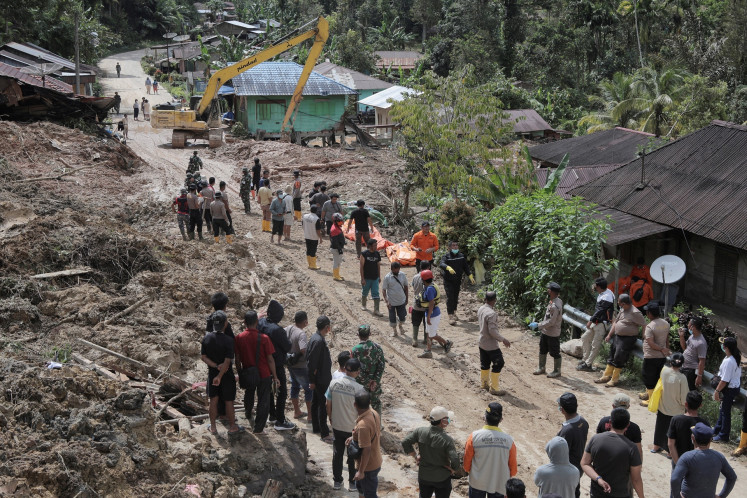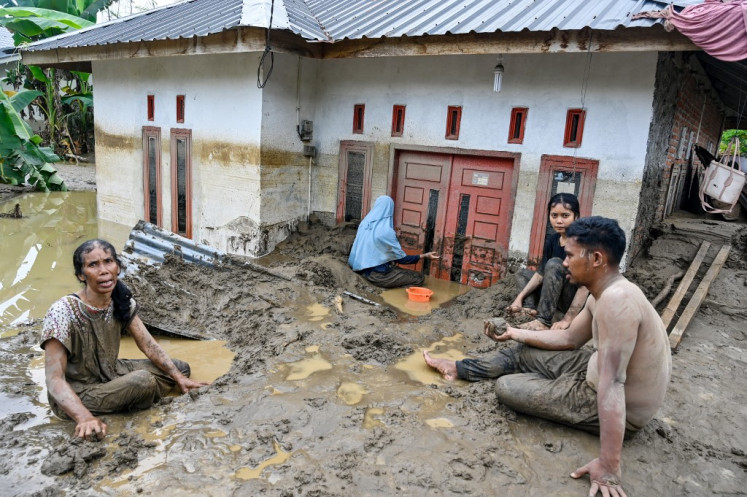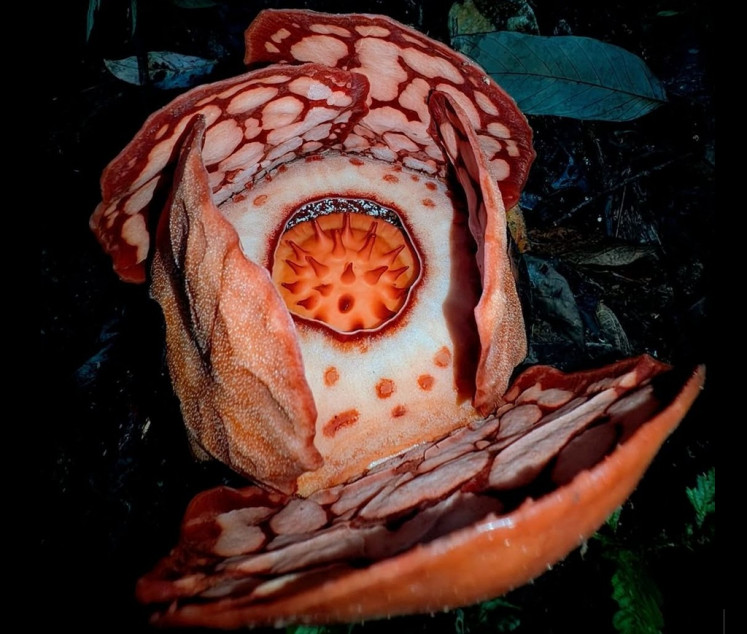Popular Reads
Top Results
Can't find what you're looking for?
View all search resultsPopular Reads
Top Results
Can't find what you're looking for?
View all search resultsResidents in shadow of Mount Semeru reckon with ruin
Fathers cradled distressed daughters, elderly villagers heaved mattresses on their backs and farmers carried goats that had survived, trying to salvage what they could from where their village once existed.
Change text size
Gift Premium Articles
to Anyone
S
urrounded by an apocalyptic scene of molten ash and mud, locals who live in the shadow of Indonesia's Mount Semeru combed through ruined belongings Sunday after their homes were blanketed by its eruption a day earlier.
Fathers cradled distressed daughters, elderly villagers heaved mattresses on their backs and farmers carried goats that had survived, trying to salvage what they could from where their village once existed.
"We did not know it was hot mud," said Bunadi, a resident of Kampung Renteng village. "All of a sudden, the sky turned dark as rains and hot smoke came."
The sudden eruption, which killed at least 13 people and left dozens injured when plumes of ash and streams of lava hit nearby hamlets, has forced hundreds of families into shelters and left many homeless.
At a local mosque, mothers sat on the floor next to their sleeping children, fortunate to have escaped the deluge that encased entire villages in ash and left dozens with severe burns.
Some returned to their ghost towns after the eruption despite the risks to their health from filthy air, desperate to pick up the pieces from the acrid sea of mud.
In one home in Lumajang in East Java, plates, pots and bowls sat on a table as if dinner was being served, but the food had been replaced with servings of volcanic ash.
Some locals searched desperately for missing friends and relatives.
"There were 10 people carried away by the mud flow," said Salim, another resident of Kampung Renteng.
"One of them was almost saved. He was told to run away but said, 'I can't, who will feed my cows?'"
Roofs of houses in the village of Sumber Wuluh poked out from layers of thick mud, highlighting the sheer volume that descended on the area.
Outside, cows either laid dead or clung to life with their flesh ripped off by the searing heat.
A cigarette hung from the mouth of one evacuee as he was pulled to safety, while rescuers dressed in orange uniforms worked against a hellish dark-grey backdrop.
One group of Sumber Wuluh residents stood together in the ash, looking towards Semeru's crater as smoke continued to billow.
With blackened, leafless trees, submerged cars and buckled buildings all around, they and their animals were the only life where all else had fallen quiet.









